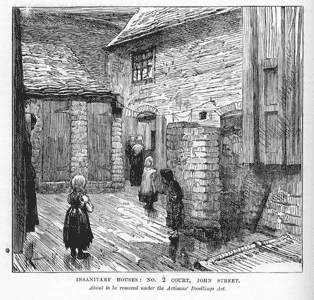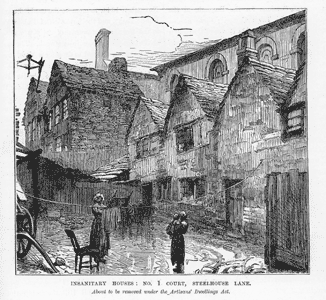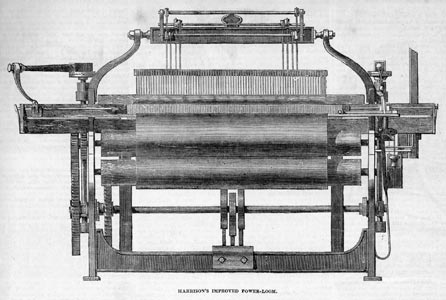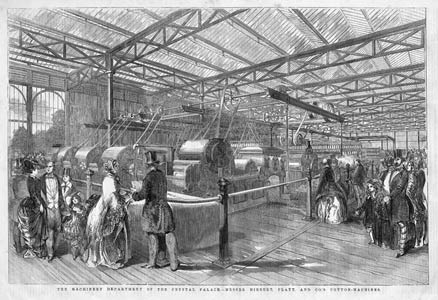|

NOTES ON ISSUE 3: HISTORICAL GLOSSARY
PART 1 OF 3
Printable View
blue
book
"Blue books" was the Victorian term for Parliamentary
reports, generally containing much statistical information,
which had blue paper covers.
Mr. M'Choakumchild said he would
try me again. And he said, This schoolroom is an immense town,
and in it there are a million of inhabitants, and only five-and-twenty
are starved to death in the streets in the course of a year.
What is your remark on that proportion? And my remark was—for
I couldn't think of a better one—that I thought it must be just
as hard upon those who were starved, whether the others were
a million, or a million million.
Sissy, as Dickens's representative of compassion and humanity
in the novel, here takes the part of the small group who has
starved. Her attitude implicitly criticizes the great principle
of Benthamite Utilitarianism: that a rational society should
have as its goal providing the greatest happiness to the greatest
number of its members. Sissy's objection to M'Choakumchild's
scenario points out the flaw in this reasoning: that the miserable
remain just as miserable, whether others are happier or not.
In the hardest working part of Coketown; in the innermost fortifications
of that ugly citadel, where Nature was as strongly bricked out
as killing airs and gases were bricked in; at the heart of the
labyrinth of narrow courts upon courts…
The centers of Victorian cities, lacking good sanitation and
desperately overcrowded, were terribly unhealthy. "The Quiet
Poor," an article that appeared in Household Words on
April 8, describes a similar slum in the London area. (To download
the article, see Issue
2.) These two pictures of such areas in Birmingham
are taken from an 1880 work, Old and New Birmingham,
by Robert Dent:


a good power-loom weaver
The power-loom was invented in 1787, and improved and refined over the years. More than a hundred thousand such looms were operating in the northern manufacturing regions by 1845, but most workers were younger than Stephen, and many were women. Operating the power-loom was physically debilitating and poorly paid, and older men (such as Stephen was, in his milieu, at age 40) often turned to other employment.
This engraving of "Harrison's Improved Power-Loom" is taken from the Illustrated London News of August 23, 1851:

Ten years before the composition of Hard
Times, on May 18, 1844, the
Illustrated London News published this engraving of
the interior of a
power-loom factory:

The lights in the great factories, which looked, when they were illuminated, like Fairy palaces—or the travelers by express-train said so…
Dickens's description of the lit-up factories
ironically mixes the fancy he advocates in Hard Times
with the utilitarian atmosphere of the factories. It is telling
that only the travelers on the express train—rushing past the
factories—can think they look like "Fairy palaces." As Dickens's
descriptions make clear, conditions on the factory floor were
generally quite different. Nevertheless, British industry's
manufacturing prowess was a point of pride for the nation, and
as such it was prominently featured at the 1851 Great Exhibition
at the Crystal Palace (itself sometimes referred to as a "fairy
palace"). On August 23, 1851, the Illustrated London News
devoted an entire page to an engraving depicting the "machinery
department" at the exhibition.

Click
on image for larger view
|

